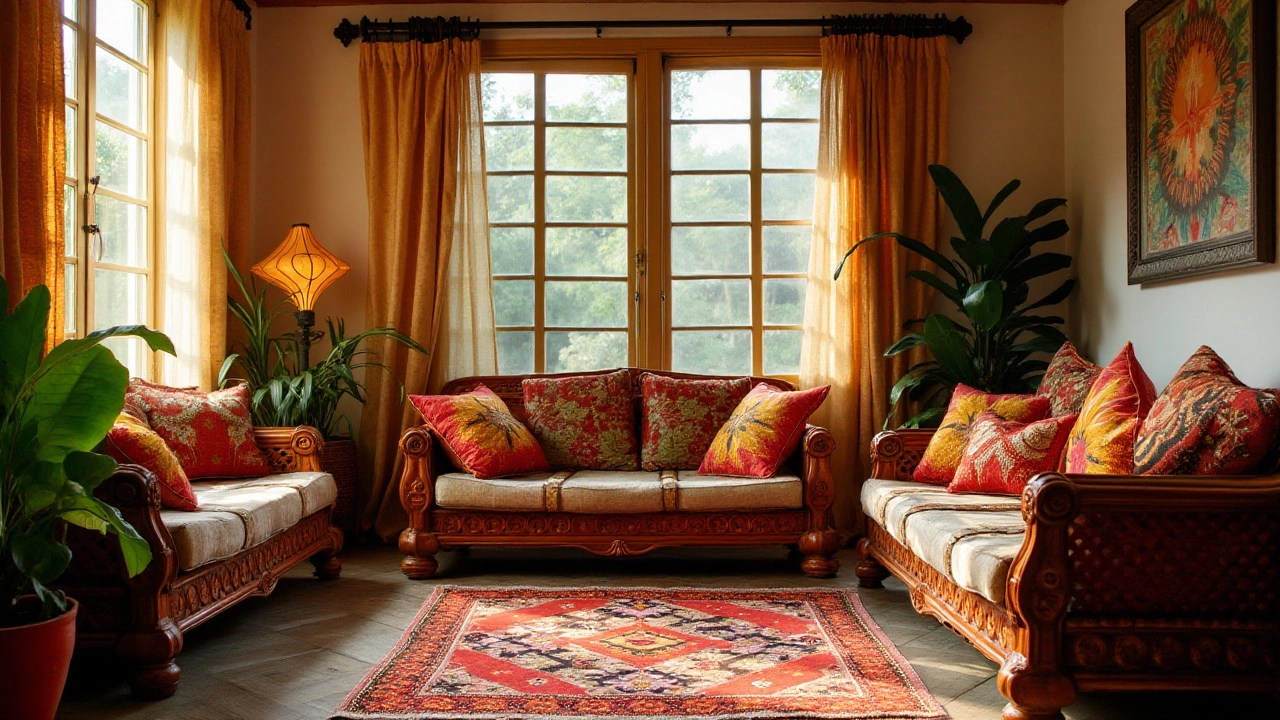Loft Conversion Guide: Is Turning Your Attic Space Into a Room Worth It?

Ever looked at the forgotten space above your head and wondered if you could do something a little more exciting (and useful) with your loft? Maybe you want a hideaway for your books, a guest bedroom, or even a tiny cinema. The big question is: is converting your loft worth all the hassle, dust, and hourly cups of tea that builders require? There's more to this decision than just fresh square footage, and while the lure of a dreamy new attic room is real, so are the pitfalls that catch out even the savviest homeowners. Let's unpack what it really means to transform that musty attic into a livable, valuable part of your home, from the nuts and bolts to the numbers that matter.
Why Homeowners Eye the Loft: Value, Space, and Lifestyle
Most people don’t realize just how underused lofts and attic spaces are in the average UK and US home. Depending on where you live, up to 30% of your home’s total floor space could be sitting there, just waiting for a new purpose. With sprawling new builds rare and home prices stubbornly high in many areas, it’s no wonder that people are hunting for practical ways to squeeze every last inch of space from their property. According to a Nationwide study, a loft conversion can increase a property's value by an average of up to 20%—that's a stat that grabs your attention. Still, before daydreaming about movie nights up in the rafters, think about why you’re even considering the conversion.
Families living in terraced houses or classic semis often turn to the loft for that ‘bonus room’—maybe an office, bedroom, or nursery. Remote work only increased this trend, with people desperate to escape the dining table desk. Some just want straight-up storage with a bit of style—think smart shelving instead of piles of dusty Christmas boxes. And then there’s quality of life. A cleverly converted loft can bring in more natural light, give you panoramic neighbourhood views, and provide an escape from rowdy teenagers or the chaos downstairs. Ever tried to find peace when the kids take over the living room for a Fortnite marathon? Trust me, a quiet attic retreat suddenly sounds like paradise.
It isn’t all roses, though. The appeal fades fast if you can’t actually stand up straight in the space, or if your house is in a conservation area with tougher planning rules. Some lofts are just too poky, or the roofline too low, to achieve the airy vibe a Pinterest mood board promises. But for homes built after the 1960s, you’ll likely have enough pitch and structure to work with. A local carpenter once told me, “if you’re not banging your head climbing in, you’re halfway there already.” Technical, yes, but practical wisdom. If your primary driver is pure value—maybe you’re planning to sell in a few years—a good attic room almost always nets a better return than an average kitchen refurb, mainly because it adds another bedroom without eating garden space.
What’s Involved: The Realities of a Loft Conversion Project
The process starts with a tape measure and the optimistic gleam in your eye. But before you clear out those old boxes, you’ll need to check if a conversion is even possible. Building regulations are your first hurdle: in the UK, you need at least 2.2 meters at the tallest point after insulation and flooring, while in the States, local codes might require even more. You’ve got to measure from the bottom of the ridge beam to the top of the ceiling joists. If you’re short on that, your choices shrink—either raise the roof (expensive) or lower the floor below (also expensive), or walk away from the idea before the costs spiral.
Then comes planning. In England, many loft conversions fall under permitted development rights, meaning you don’t always need formal planning permission, as long as you don’t extend beyond certain cubic meters (40m³ for terraced, 50m³ for detached or semis). But if you live in a conservation area or a listed property, you’ll likely need formal approvals. And don’t forget the neighbours. If you share a wall—as in a semi or terrace—the Party Wall Act applies, which requires an official agreement. You won’t believe how often this causes delays: I’ve seen perfectly civil relations turn frosty over as little as a shared chimney stack.
The design stage is the fun bit but also the point where the cost creeps in. Choices include simple rooflight (velux) conversions which just add windows and strengthen the floor; dormer conversions, which stick a box-shaped extension out of the roof; hip-to-gable conversions, which involve changing the sloping side of the roof into a straight wall; and more complex mansard conversions, where you remodel the whole roof. Each step up adds complexity, time, and cost—but also headroom and usable space. None of these steps should be taken lightly. Structural engineers might get involved to check your beams and joists. You’ll get architects drawing up plans and, sometimes, your local council popping in for inspections. People sometimes try to cut corners, but cheap, unregulated jobs nearly always end badly (just ask my mate Tom, who ended up with leaking windows and creaking floors after a bargain-basement job last year).
The actual build can take anywhere from five to twelve weeks. Prepare for disruption—it’s dusty, noisy, and tradespeople get everywhere. (Lyra banned me from the house for a week during ours; apparently, my “advice” wasn’t helpful.) Builders might need external scaffolding, skip hire, deliveries blocking your drive, and lots of access. If you work from home, prepare to work from a café or a friend’s place. At least you can look forward to an impressive reveal at the end. Here’s a quick snapshot of what's typically involved at each build stage:
| Stage | Description | Average Duration |
|---|---|---|
| Survey & Drawings | Initial measurements, drafts | 1-2 weeks |
| Approvals | Permits, party wall, drawings | 2-4 weeks |
| Structural Work | Steel beams, floor reinforcements | 2-3 weeks |
| External Modifications | Windows, dormers, roofs | 1-3 weeks |
| Insulation & Internal Finish | Walls, plaster, wiring, stairs | 3-5 weeks |

Cost, Value, and Financing: What’s the Price of That Extra Room?
This is where people’s dreams either take off or hit a brick wall. The typical loft conversion in the UK costs between £30,000 and £60,000 for a standard dormer conversion, depending heavily on your postcode. In London and the Southeast, you could be looking closer to £80,000 for something more complex. In the US, prices vary due to building code, design, and local labor—anywhere from $20,000 for a basic finish, all the way to $70,000 or more in pricier cities. Remember, a high-end finish, en-suite bathrooms, or striking architectural features will all push up the price tag.
People sometimes forget the hidden extras: architectural drawings (upwards of £1,500/$2,000), surveyor fees, party wall agreements, building regulation fees, skips, increased home insurance, and, of course, the cost of higher council tax (if converting to a new bedroom or self-contained apartment). Then there’s the furniture, floorings, blinds—few projects finish at “just” the builder's quote.
So, does the value added match what you spend? The answer is usually yes, but with caveats. The classic scenario: adding a double bedroom and en-suite with good head height in a three-bed, one-bath house will bump the value significantly. Nationwide Building Society’s 2022 report found an average value increase of 20%, but the boost is higher if the conversion is done to a high standard, if you’re in a city, or if it creates an extra bedroom and bathroom. But don’t overdo it—adding a fifth bedroom when local buyers mostly want three or four means you might not see any extra cash when it comes to selling up.
Most families finance loft conversions with home improvement loans, remortgages, or savings. Some even use credit cards for smaller elements (like windows and decor), but given the sums involved, that's always risky. Local authorities sometimes offer grants for insulation or renovation in heritage areas, so it’s worth checking. Finally, think about heating and running costs; larger homes mean higher utility bills. Most people find the convenience and lifestyle benefits outweigh the higher bills, but don’t be taken by surprise when the winter heating costs hit.
Design Decisions: Tips for Making Your Loft Stand Out
Designing your new loft room is about far more than a lick of paint. The success (and feel) of the space depends on a whole series of smart, sometimes invisible decisions. Light, layout, insulation, and even how you get up there—all play bigger roles than people expect. Adding big rooflights or well-placed dormers means you'll flood the room with daylight, cutting out that boxed-in attic feeling. South-facing windows are a win, but don’t forget blackout blinds, because summer mornings hit hard when the sun rises at 5am.
Think carefully about access. The law requires a proper staircase, not just a folding ladder. Will it eat into an existing bedroom, or can you use dead space above the stairs below? Spirals look great but aren’t brilliant for getting dressers or beds up there. Good designers will maximise eaves storage with built-in cupboards and shelving, making awkward shapes practical—no more wasted space behind the sloped ceiling.
Soundproofing matters more than you’d expect. Without good insulation, you’ll hear every step, cough, and TV through the ceiling. Think dense rock wool or specialist soundproof plasterboards. If you want the loft to double as a guest room or office, robust internet access is a must—consider hardwired connections, as Wi-Fi loves to drop out at the top of the house. Heating is another one: radiators might work, but underfloor heating is more comfy, and avoids boxing yourself in with clunky pipes.
For those with the budget, adding an en-suite bathroom is a legitimate game changer, both for lifestyle and resale. It does mean factoring in extra plumbing and water pressure concerns, especially if the water tank is already operating at its limits. Put thought into things like extractor fans, tile choices (lighter colors make the attic look bigger), and clever mirror positioning to bounce natural light. If you want a little luxury, skylight showers—where you bathe beneath the stars—are having a moment.
Here are my top tips, learned the hard way (mostly during heated debates with Lyra over tiles):
- Always get three detailed quotes and check references—bad builders are a nightmare.
- Insist on seeing full insurance and warranties from all contractors.
- Visit finished conversions by the same builder if possible. Seeing is believing.
- Don’t skimp on insulation, even if it means going a bit over budget.
- Choose layouts that maximize usable headroom, not just floor space.
- Future-proof: think about storage needs, extra sockets, and even solar power options.

The Real-Life Picture: Pitfalls, Surprises, and Lasting Impact
The truth is, not every loft conversion goes to plan. Forgotten pipework, bats in the rafters (happened to our neighbour, had to halt work for months), and misunderstandings with builders are all real things. Sometimes the stairs just won’t fit where you want them. Sometimes you hit a steel beam that no one knew was there. And sometimes, the disruption leaves everyone cranky—especially if you didn’t discuss details with housemates, partners, or pet cats. Expect the unexpected, and try to build in extra time and cash for surprises. The most common regrets? Not enough headroom, cheap windows that leak, or thinking you can go cheap on finishes and fix it up later. Most people wish they’d spent just a little more for things like better lighting or hardwood floors.
It's tempting to try and DIY elements of the job, but unless you’re a seasoned builder, it’s best to leave big stuff to the pros. Regulations are strict for a reason—no one wants sagging floors or dodgy electrics above their head. If you’re tempted, maybe stick to decorating and clever storage hacks. Legal paperwork takes longer than you might expect, especially if your neighbours are on holiday when the party wall notices go out. Little delays stack up and can leave you without access to a vital chunk of your home for weeks at a time.
The other thing they don’t tell you: once that loft is done, your life changes in subtle but real ways. You might find new rhythms in the house—a quiet office for working or studying at the top, or somewhere to escape a busy kitchen. You could find visitors magically start accepting your invitations, especially if they can stay in a gorgeous new guest room. On the flip side, you may get used to lugging laundry or suitcases up and down another flight of stairs, or discover your heating is suddenly working harder in winter. And as for resale value, while it usually pays off, there’s no guarantee. Local property trends can shift, or buyers may have very specific needs. But if you genuinely need more liveable space, and your attic can safely handle the transformation, a loft conversion usually delivers—on lifestyle, value, and pure enjoyment. Just ask anyone who’s had it done (and maybe ask their partner, too; they’ll give you the real story!).


